The oldest house still standing on Manhattan, the Morris-Jumel mansion has an illustrious history, from its earliest days as a country estate commanding the heights, to serving as General George Washington’s headquarters from mid-September to mid-October 1776. The mansion was confiscated by the Americans and transformed into a tavern after the war ended. It later became the residence of Stephen and Eliza Jumel, and after Stephen’s death Eliza married disgraced ex-Vice President Aaron Burr. The house was later sold to new owners, including the Earles, who dubbed the mansion “Earle Cliff,” before selling it to New York City in 1903. It became a museum the next year, simply known as “Washington’s Headquarters.”
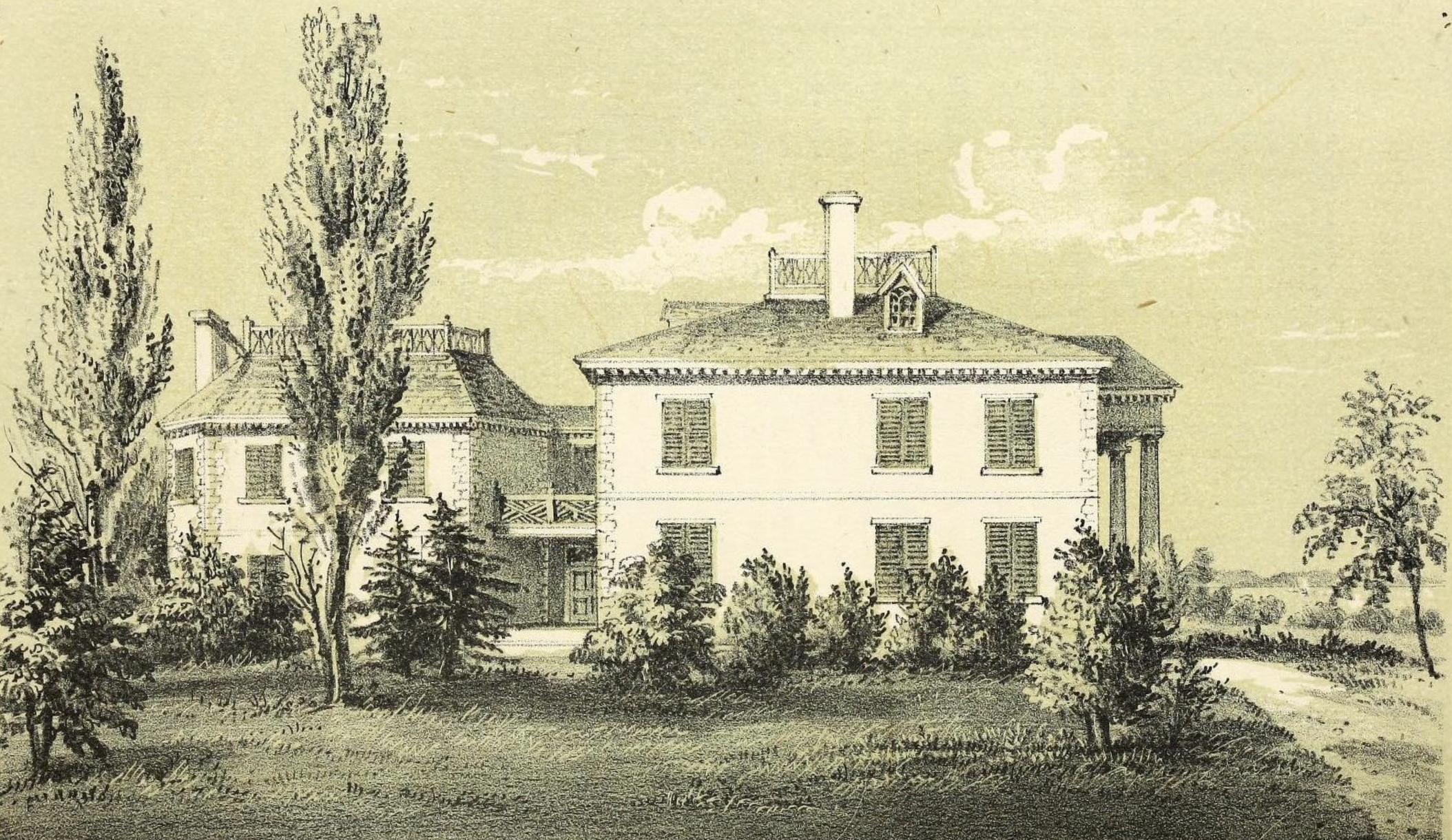
The Morris estate as it would have looked in colonial times. From D.T. Valentine’s Manual of the Corporation of the City of New York, 1854.

Join the stewards of the Morris-Jumel Mansion for a special event on July 18th from 6-9 PM
On July 18th, the Morris-Jumel Mansion will be the site of a unique event, wherein the house will be transformed for one night into an 18th century tavern! Tickets include access to the mansion after hours, unlimited bar drinks and snacks, historical games, and musical entertainment. As someone who has spent many happy hours exploring the mansion, and who has always enjoyed the wonderful events put on at the house, this is an excellent opportunity to support the museum and have a wonderful night out filled with much revelry and revolutionary spirit. You can get your tickets here!
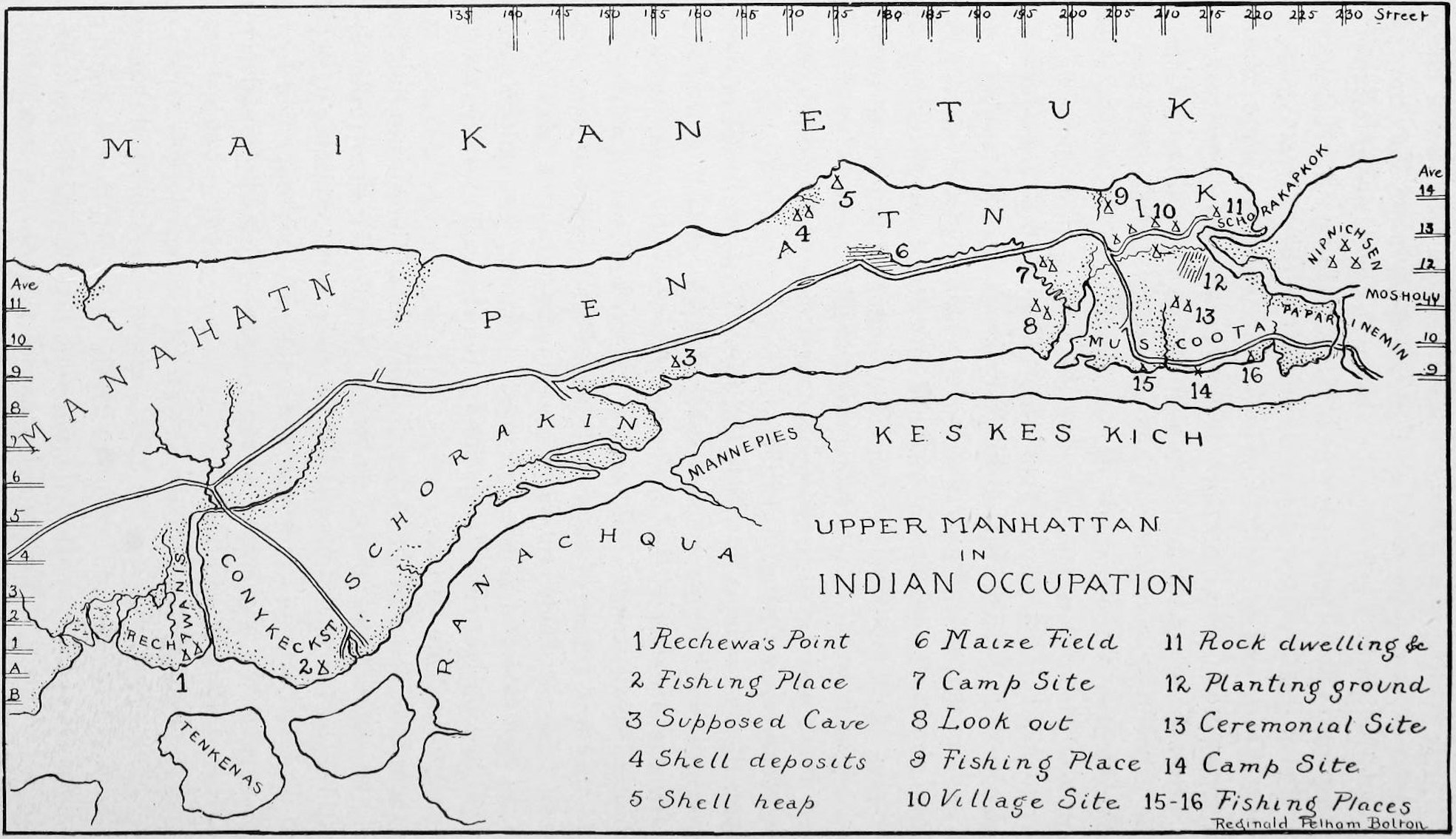
A map showing some of the native place names and significant sites in upper Manhattan. The main road, the Post Road or Kingsbridge Road, followed a native path up the heights. From The Indians of Washington Heights by Reginald Pelham Bolton.
Native groups used the land in the area as a planting ground for maize, which was called Penadnic, perhaps meaning “sloping mountain,” in reference to the rocky heights. To the north, where the land slopes down along a fault line, they fished and camped, with a ceremonial village along the Spuyten Duyvil Creek called Shorakapok, “the sitting place,” the alleged site of the purchase of Manhattan Island by Peter Minuit.
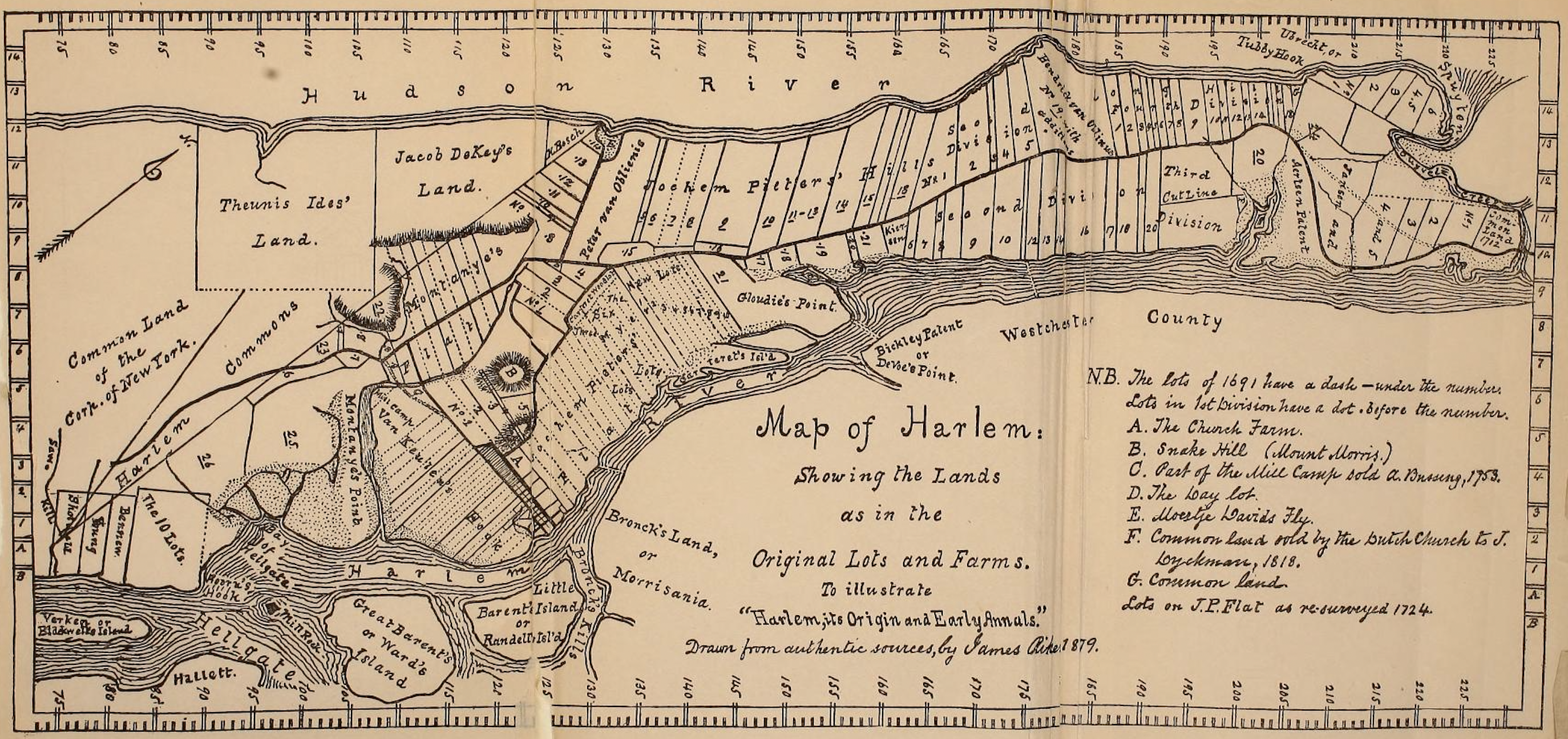
A map of Harlem showing some of the early land grants. In the upper middle are the Jochem Pieters’ Hills. A small plot to the east of the Post Road is marked Kiersen, and is the plot where Mount Morris was later built. From Revised history of Harlem (City of New York): Its Origin and Early Annals by James Riker.
As the Dutch settled Harlem and parceled out lots to the south of the heights, others laid out farms to the north, including the venerable Dyckman family. The heights had various names, including Jochem Pieter’s Hill, named after a Swedish captain who purchased 400 acres in the area. Others called the heights the Long Hill or Breakneck Hill. The son of a Harlem farmer, Jan Kiersen, received a land grant upon it, building a farmhouse around 1700 to the east of the old Post Road. This plot of land, which was later owned by the Dyckmans, was later sold to Colonel Roger Morris.
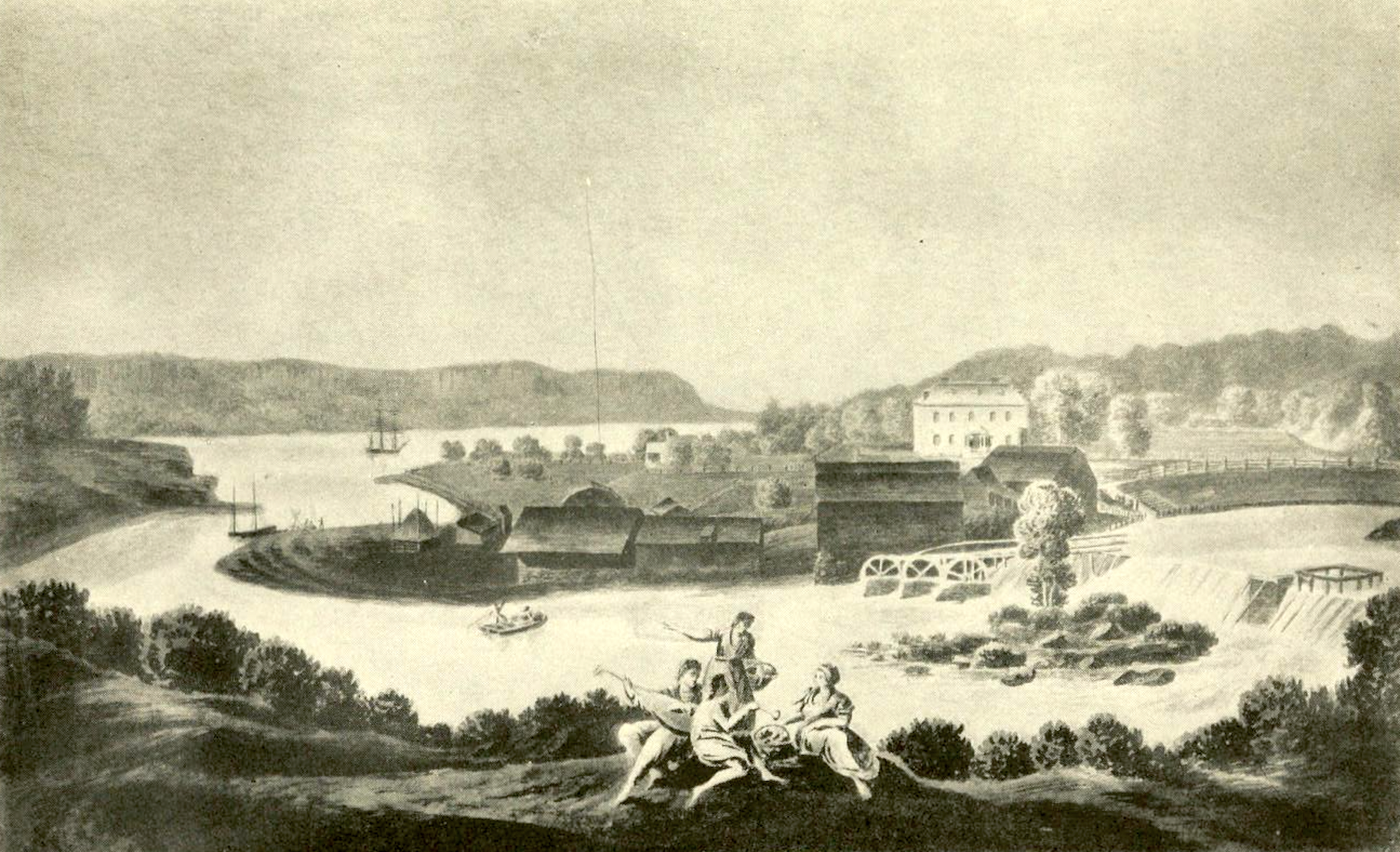
Philipse Manor Hall, depicted in 1784. The manor house is the lighter structure in the background, with its original door facing to the south. The saw mill is in front of it, and gave the Saw Mill River its name. To the left is the Hudson River and the Palisades. Philipse Manor is distinguished from Philipsburg Manor to the north, with the former known as the lower mills and the latter known as the upper mills. From Philipse Manor Hall at Yonkers, N. Y.: The Site, the Building and its Occupants by Edward Hagaman Hall.
Morris fought during the French and Indian War, where he likely made the acquaintance of a young George Washington. He was wounded during the calamitous Braddock Expedition, and recovered in New York City, where he later established himself. He won the hand of Mary Philipse, the daughter of Frederick Philipse II, whose grand manor house sat along the banks of the Saw Mill River, overlooking the Hudson River in what is now Yonkers. It was there that the couple were married in 1758. As a wedding present for Mary, Roger commissioned the building of a new house on the land he had purchased, which would serve as a summer house for the couple, nicknamed “Mount Morris.”
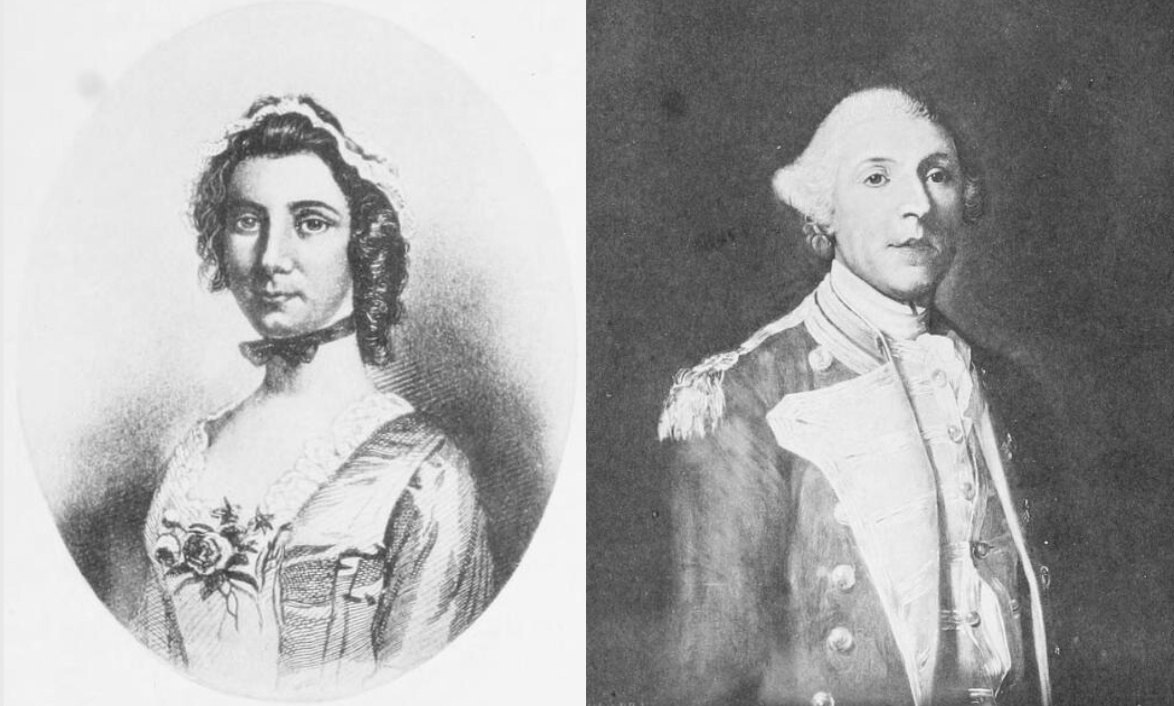
Portraits of Mary Philipse and Roger Morris. Following the end of the American Revolution, the couple and their children went to England, where Roger died in 1794. Mary outlived him by 31 years and died in York. From The Jumel mansion, being a full history of the house on Harlem heights built by Roger Morris before the revolution by William Henry Shelton.
Finished around 1765, the house featured architectural elements that were both Palladian and Georgian, with an unusual and intriguing octagonal addition built on its north side. It was primarily meant to serve as a summer house, as the Morrises kept their main residence at their house on Stone Street. As Mary began her labors, spending several years hard at work bearing and rearing several children in quick succession, Roger was appointed as a member of the King’s Council, where he served for a decade. In 1775, Roger left for England, although he later returned to New York and became the Inspector of the Claims of Refugees, examining the claims made by Loyalists. Mary and her children moved north to the Philipse family properties, where they stayed throughout the war before leaving for England at its conclusion. She later had the distinction of being only one of three women accused of treason by the American Government.
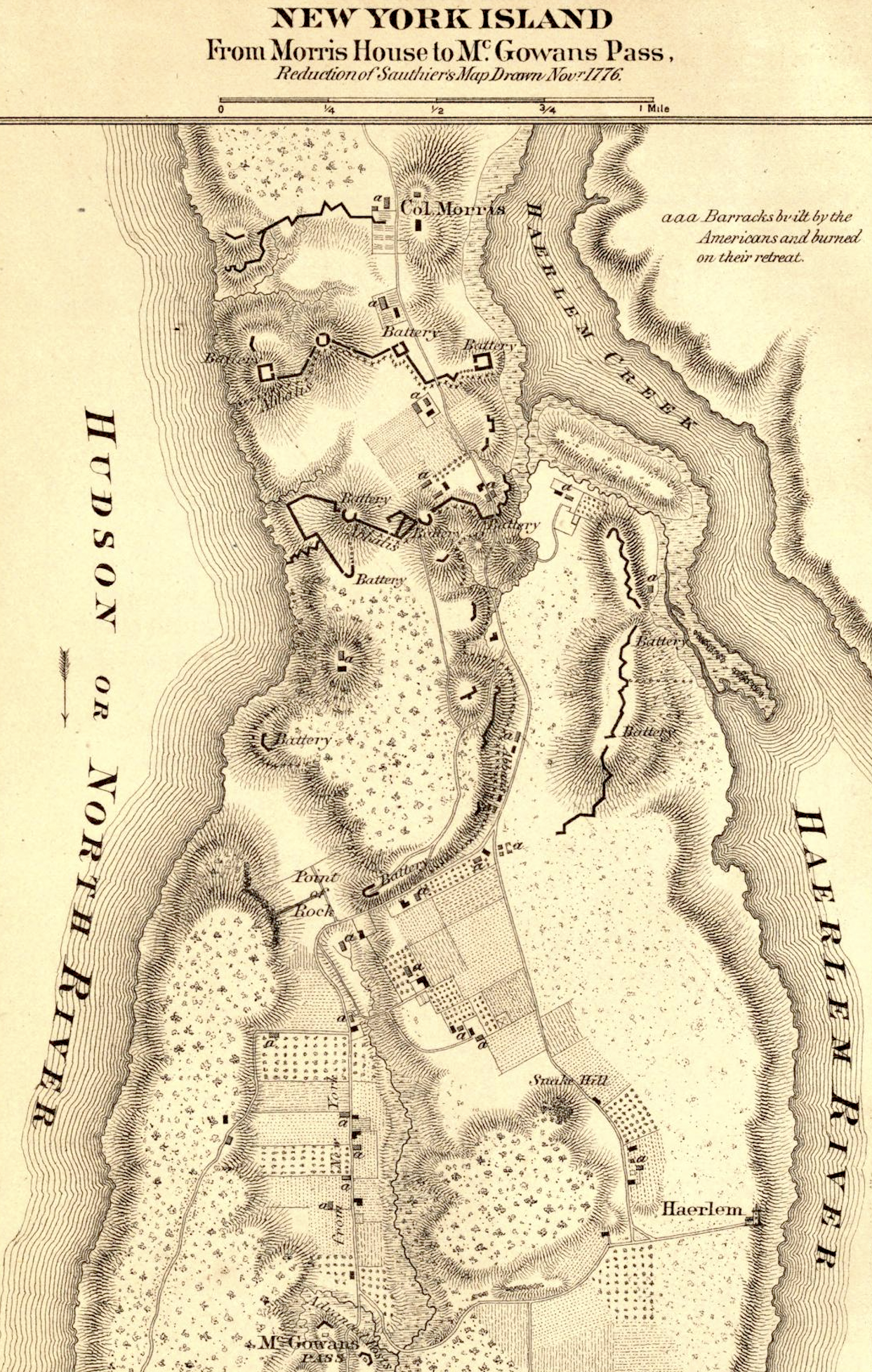
New York Island from the Morris House to McGowans Pass. Mount Morris is at the top of the map, which also shows fortifications built by Americans on the heights. On the lower left is Morningside Heights, where much of the Battle of Harlem Heights was fought. The Point of Rocks, where Washington directed the troops, is in the hollow. From Commemoration of the battle of Harlem Plains on its One Hundredth Anniversary by The New-York Historical Society.
War came to New York City in late summer of 1776 with the fateful Battle of Brooklyn. Following a daring overnight escape, the Americans regrouped on Manhattan, although it was clear that the British would attack again, and Washington’s war council advised that they abandon the city and fall back to Harlem Heights. There, Washington could commandeer Mount Morris as his new headquarters. On September 15th, the British launched an assault on Kip’s Bay. The troops that landed faced light opposition, as the guns of the warships had scattered the Americans. General Washington rode down from Harlem and desperately tried to control his soldiers, even getting within 80 yards of the British, but the defense collapsed and turned into a rout. Thankfully for the Americans, the British did not press on with the attack at Kip’s Bay.
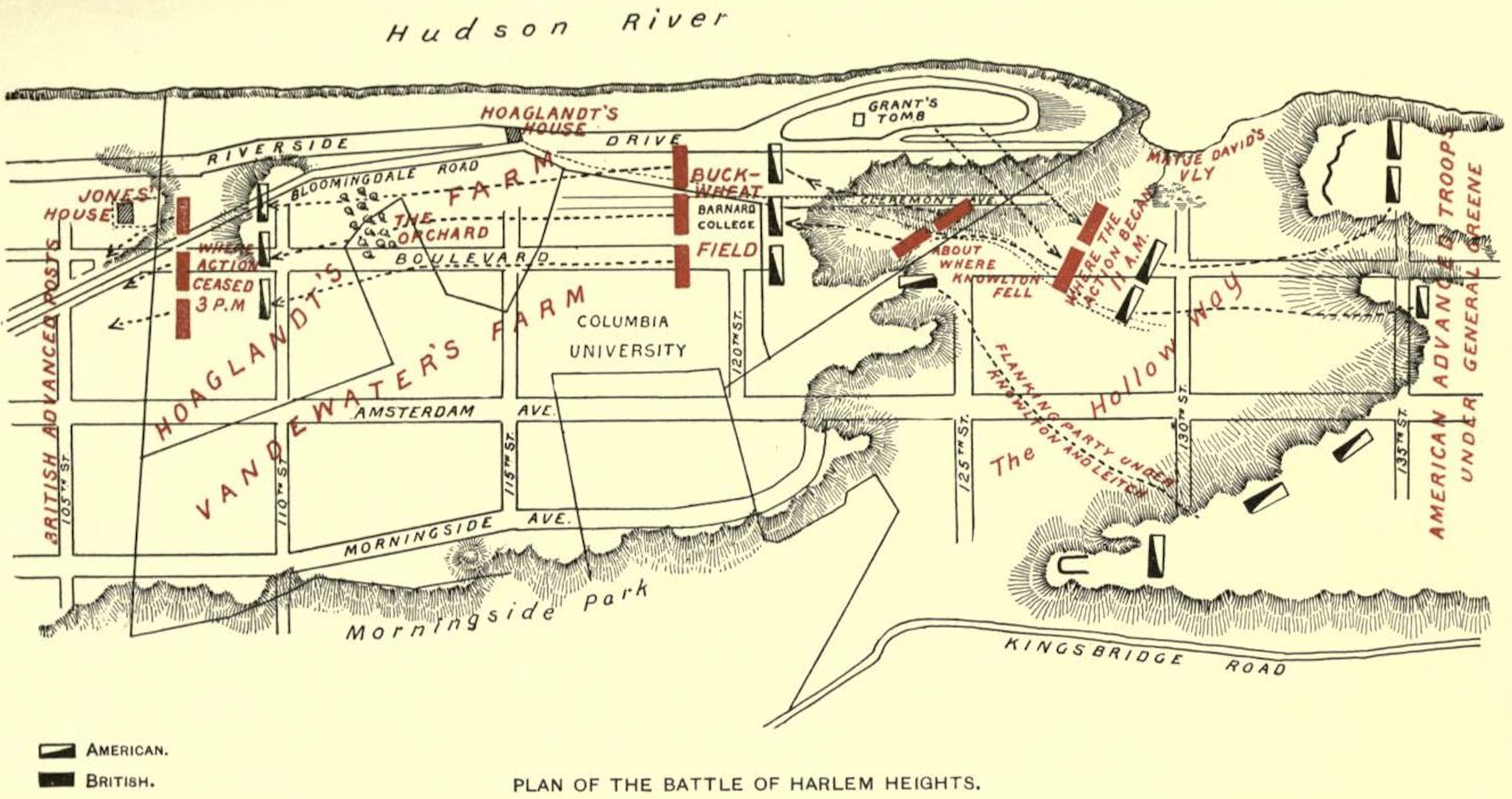
Plan of the Battle of Harlem Heights, showing British and American troop movements. The battle, fought on September 16, 1776, was a slight but badly needed American victory. From the Half Moon Series: Papers on Historic New York, Second Series, edited by Maud Wilder Goodwin, Alice Carrington Royce, Ruth Putnam, and Ava Palmer Brownell.
However, early the next day they launched an attack on Harlem Heights. The fighting was hot, and saw 5,000 British and Hessian troops attempting to overcome 2,000 Americans. From an outcropping called the “Point of Rocks,” Washington observed the action, and after three attempts the Americans, who had a keen understanding of the area’s topography were able to put a stop to the British attack. Although not a major victory, it was still enough to boost the morale of the troops. It also bought Washington and his generals some time to determine their next course of action. Washington and his staff stayed in the mansion for several weeks until the British invaded Pell’s Point in the Bronx, leading to the Battle of White Plains. Although Washington was still being advised to abandon Manhattan altogether, a contingent still defended Fort Washington. On November 16th, the British launched a three-pronged attack and dislodged the Americans. Some captured officers were imprisoned at a barn on the Morris property.
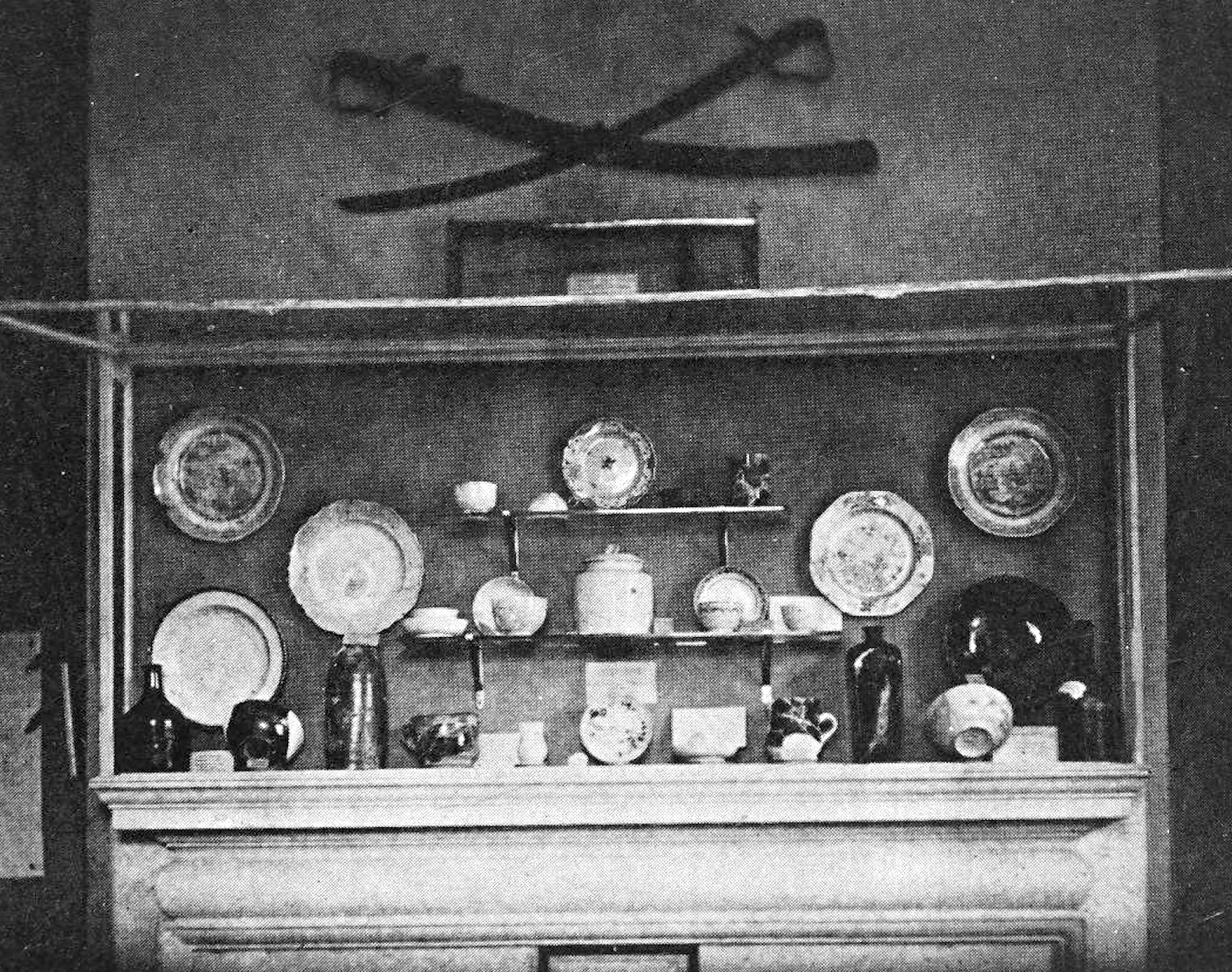
Pottery and other artefacts found around the estate and neighboring residences and taverns, along with relics found during archaeological excavations at Fort Washington, Fort Tryon, and Inwood. Above are two Hessian swords. These were displayed at the mansion when it was the museum known as Washington’s Headquarters. From Washington Heights, Its Eventful Past by Reginald Pelham Bolton.
Mount Morris then served as headquarters for various British and Hessian officers, including Baron von Knyphausen and Henry Clinton. In 1779, the house was confiscated under the Act of Attainder, which seized Loyalist properties, including those of the Philipses. When the war ended, the house was sold off to help pay off the government’s expenses, and it was turned into a tavern and inn with a stagecoach stop. It later reverted to a farmhouse for a time, although its illustrious history was the stuff of living legends, as it was once again the site of an illustrious event in 1790, when George Washington, John Adams, Thomas Jefferson, Henry Knox, and Alexander Hamilton (who would later build his house, Hamilton Grange, nearby), took a tour of the remnants of Fort Washington and had dinner at the old headquarters.

Floor plans of the house, as they looked around the time of Madame Jumel’s early occupancy and before later additions, drawn by architect Joseph Palle. From The Jumel mansion, being a full history of the house on Harlem heights built by Roger Morris before the revolution by William Henry Shelton.
The house passed through several hands before it was purchased in 1810 by merchant Stephen Jumel, who intended to reside in the house with his intriguing wife Eliza. Eliza Bowen Jumel had an impoverished childhood growing up in Rhode Island and worked as an indentured servant before escaping to New York and reinventing herself with a new name and a new career as an actress. Jumel was enchanted by her, and swept her on a tour of Europe. Greatly enjoying the trip, the new Madame Jumel was inspired to renovate her new residence.
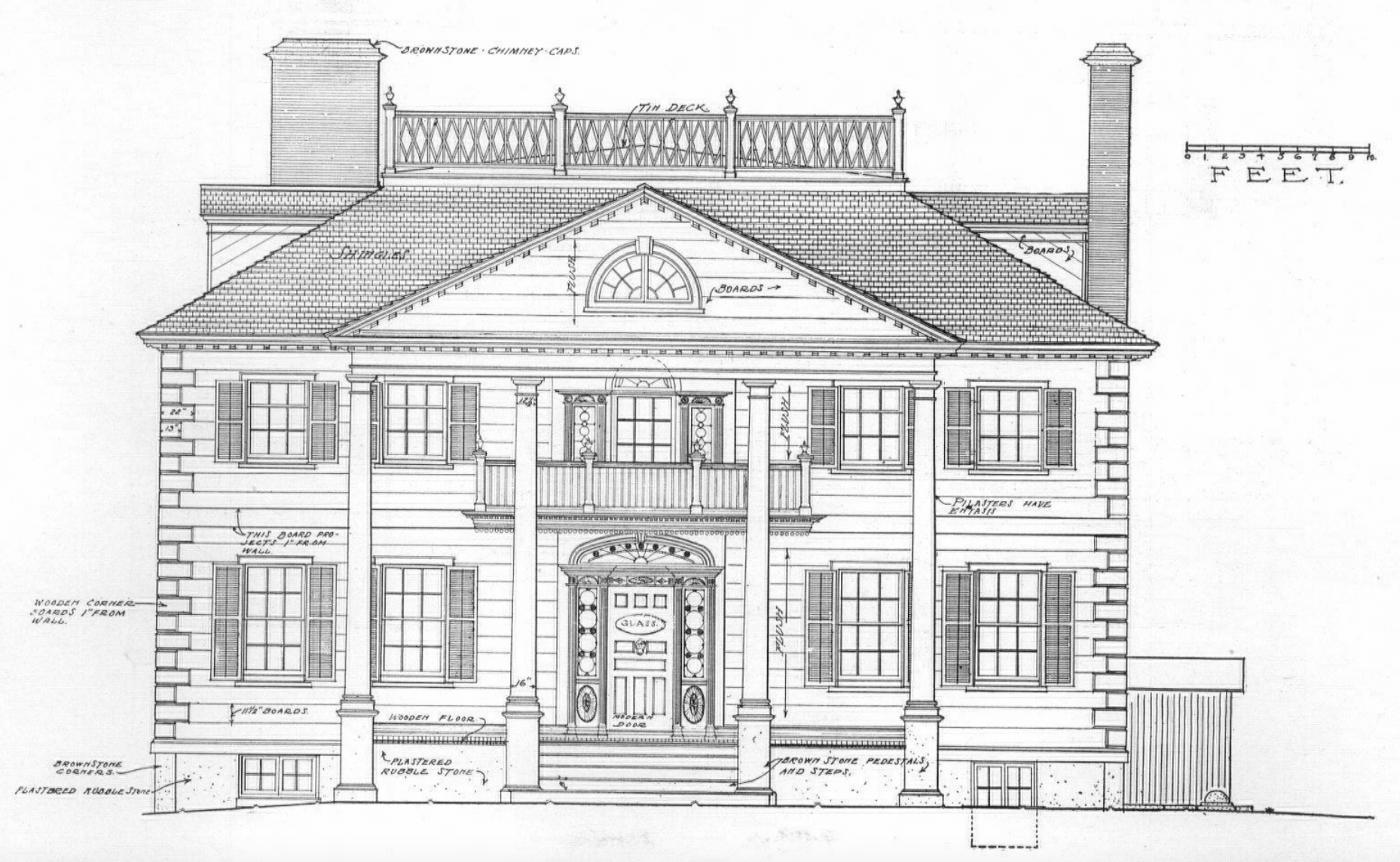
The front elevation of the house, drawn by Joseph Palle. It shows some of the significant alterations made by Madame Jumel to the property. From Architectural Record, July 1917, Volume 42, Number 1.
Significant additions to the property included an expanded portico and enlarged porch, the iconic stained glass fan window, a collection of new furniture from France, and upgraded landscaping on the property. Eliza wanted to entertain New York’s elite, although her past prevented full acceptance by the members of Knickerbocker society. However, she did socialize with her neighbors, including the widowed Eliza Hamilton, who became a good friend, although she boasted of entertaining other illustrious figures.
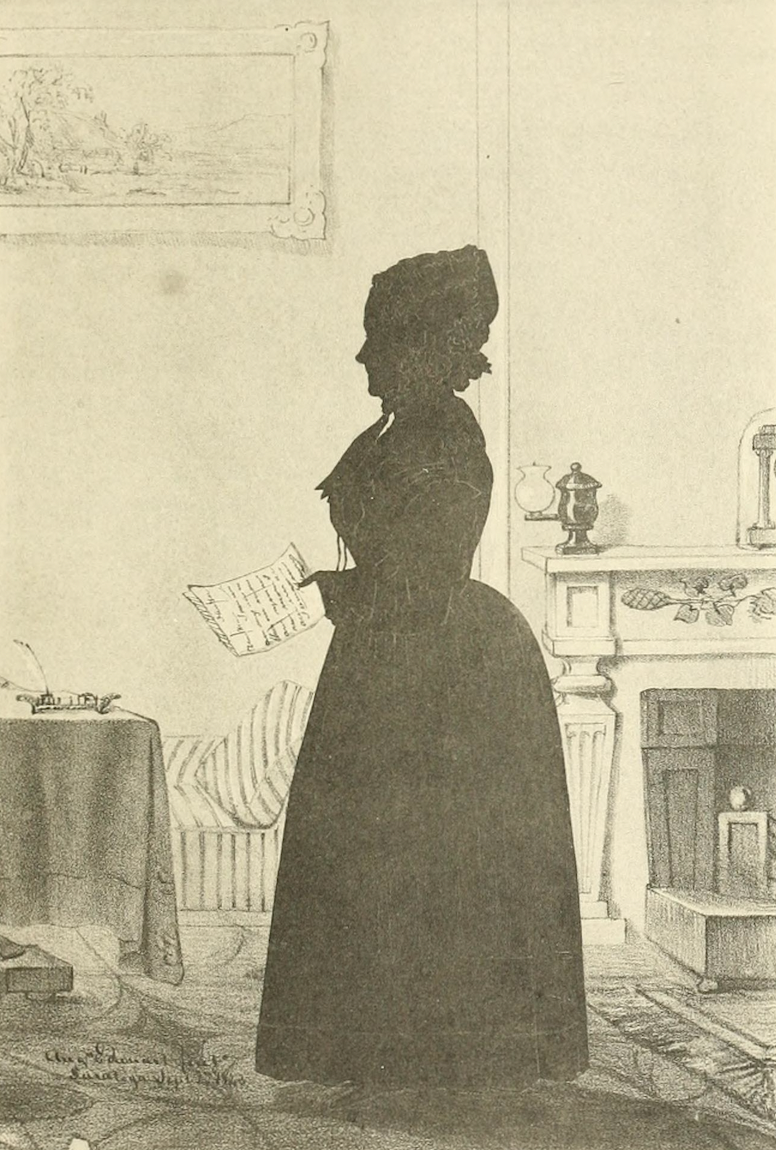
A silhouette of the elegant Madame Jumel in her more experienced years. From The Jumel mansion, being a full history of the house on Harlem heights built by Roger Morris before the revolution by William Henry Shelton.
Stephen died in 1832, and Eliza, who had deftly managed their estate, was left an exceedingly wealthy woman, noted for her excellent taste in art and considerable collection. She had a brief dalliance with ex-Vice President Aaron Burr, who she married in the front parlor of her mansion. It was recorded by former mayor and diarist Philip Hone, who noted “It is benevolent in her to keep the old man in his latter days.” The marriage only lasted four months, as Burr was quick to gamble away large parts of Eliza’s fortune, and they divorced the following year, with Alexander Hamilton, Jr. serving as Eliza’s lawyer.
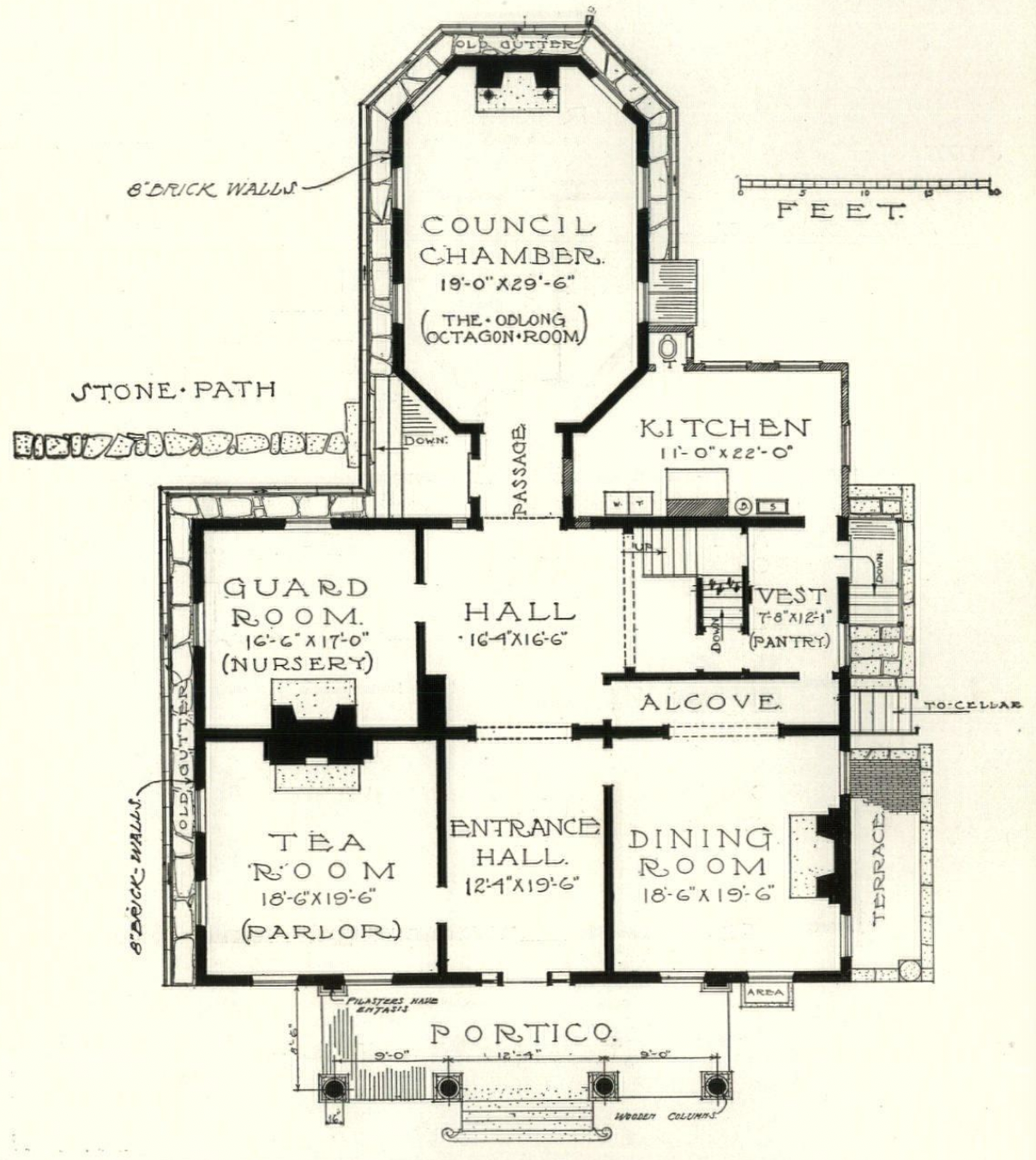
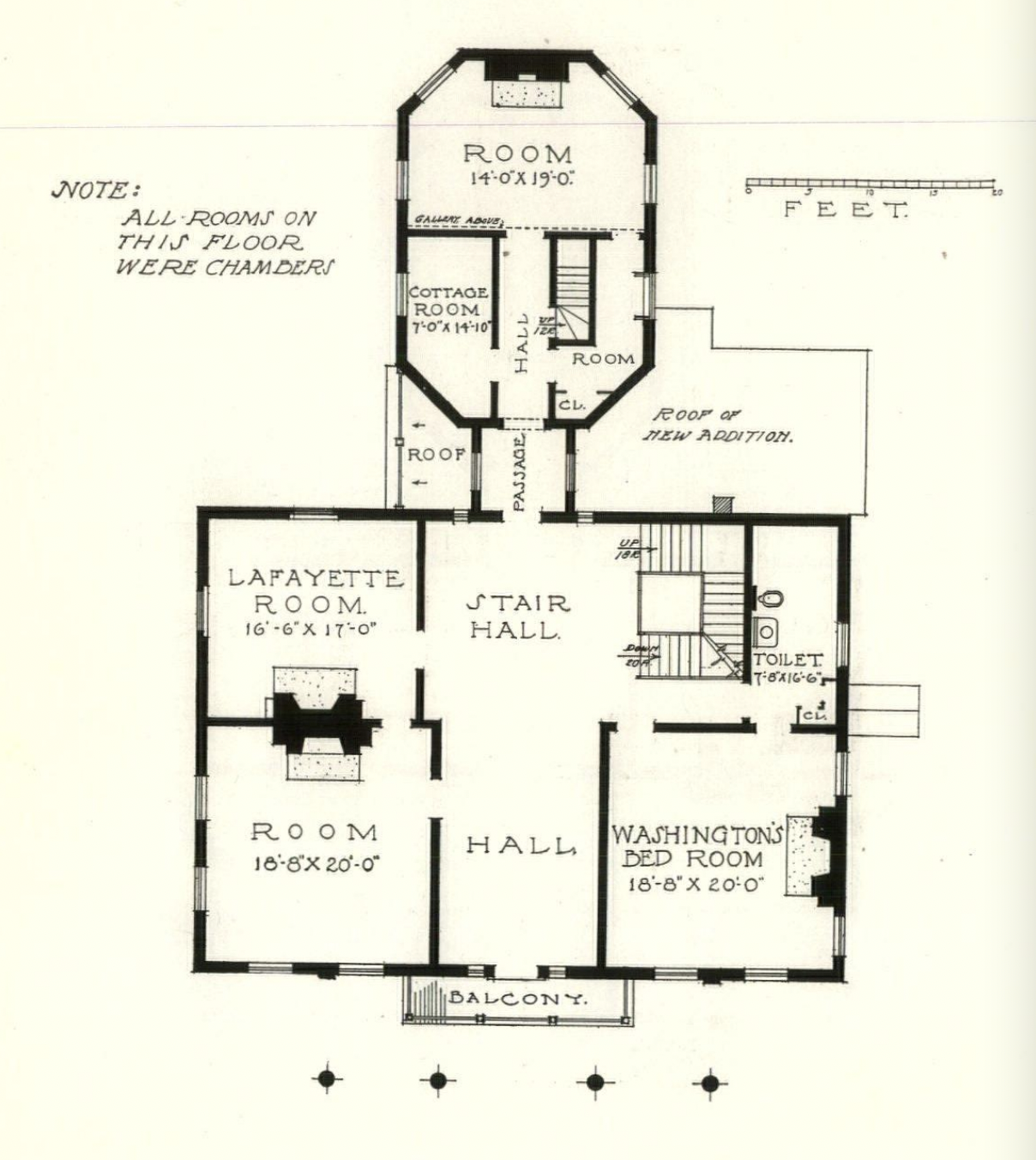
Plan of the first floor (top) and second floor (bottom) showing some of the alterations made to the house by Madame Jumel and later owners. Eliza and Aaron Burr were married in the tea room (also known as the reception room). These plans were also drawn by Joseph Palle. From Architectural Record, July 1917, Volume 42, Number 1.
Following Eliza’s death in 1865, family members entered into litigation in order to get their hands on the estate. Her niece, also named Eliza, was to get the property, but her brother contested the will in a protracted legal battle. The house was eventually sold, and passed through a series of owners, the last of which were the Earle family, who bought the house in 1894 and dubbed it “Earle Cliff.” The estate had been partitioned off, and General Ferdinand Earle proposed to move the house from its plot and sell the land for apartment buildings, although this fortunately fell through. In 1903, Lilie Earle sold the house to the City of New York, and was instrumental in facilitating the creation of the Washington’s Headquarters Association and opening up the old house as a museum.
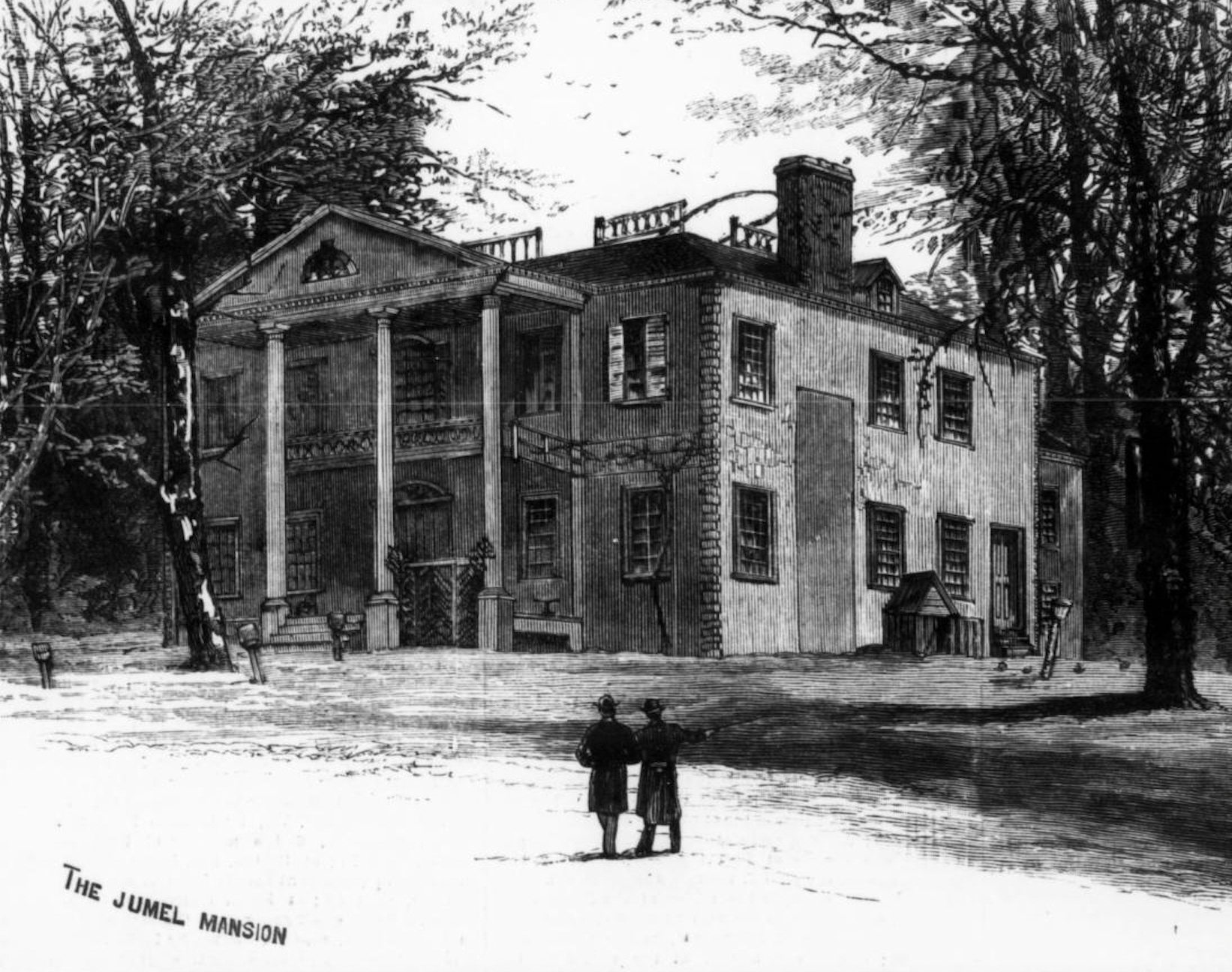
The mansion as it looked in 1882. The house is clearly deteriorating and in bad need of repair. From Frank Leslie’s Illustrated Newspaper, January 21, 1882, Volume 53, Issue 1374.
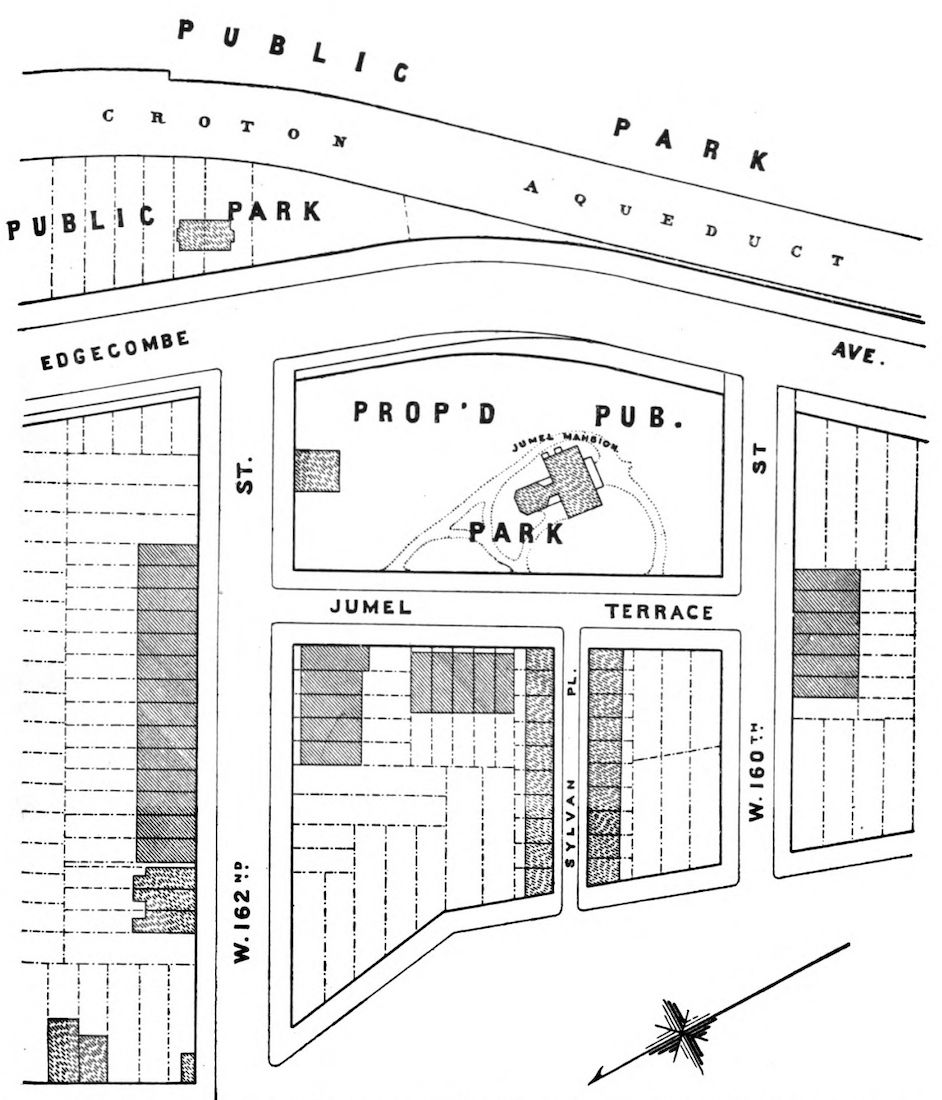
Image caption
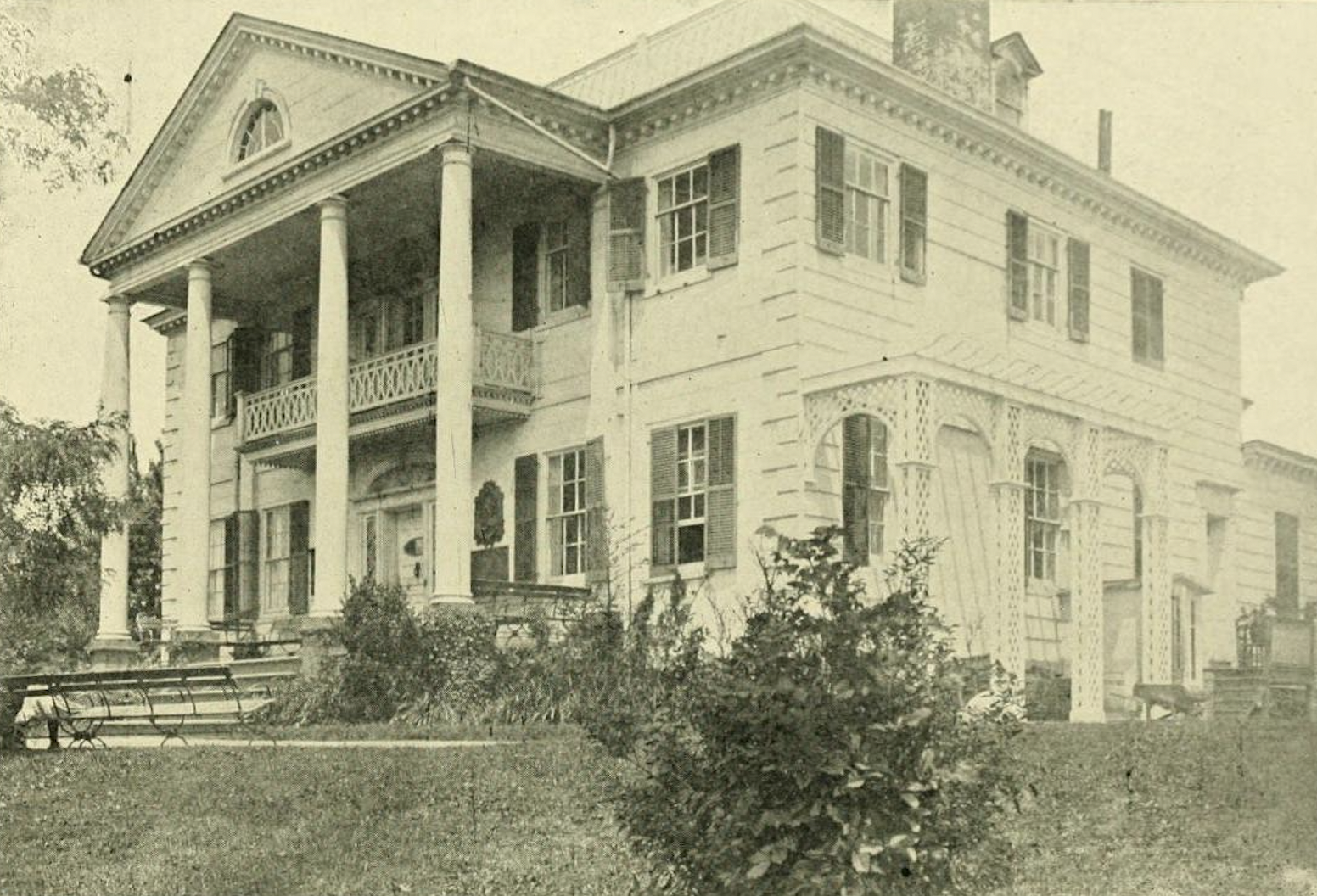
The mansion as it looked after it opened as a museum, 1907. From Old Buildings of New York City, published by Brentano’s.

An interesting view of the Harlem Speedway, showing the commanding view that the old mansion had, c. 1910. To the right, just out of view, is the Polo Grounds. From Valentine’s Manual of the City of New York, edited by Henry Collins Brown, 1922.
Select Sources
Unnatural Rebellion: Loyalists in New York City by Ruma Chopra
Harlem: The Four Hundred Year History from Dutch Village to Capital of Black America by Jonathan Gill
The Remarkable Rise of Eliza Jumel: A Story of Marriage and Money in the Early Republic by Margaret A. Oppenheimer
Reluctant Revolutionaries: New York City and the Road to Independence, 1763–1776 by Joseph S. Tiedemann